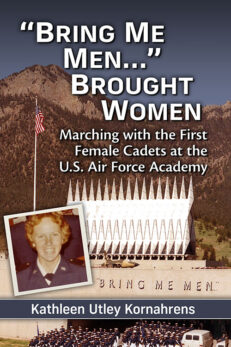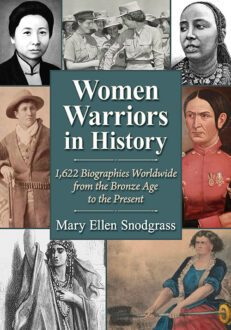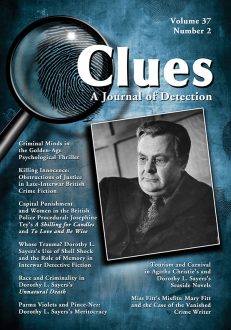Clues: A Journal of Detection, Vol. 37, No. 2 (Fall 2019)
Print Back Issue$30.00
In stock
About the Book
BACK ISSUE
This is a single back issue only. To order a current subscription, or for more information, please visit the journal’s web page at CluesJournal.com. Back issues from earlier volumes of Clues are available for order subject to availability. Also, single issues of the current volume may be ordered one at a time. Individuals may order back issues directly from our online catalog, and the charge for individuals is $30 (excluding postage). Issues from Volume 33 to the present are also available in ebook format on Kindle, Nook and Google Play. The charge for single issues for institutions is $75 per issue (excluding postage). If your institution requires a back issue, please contact us to order at the appropriate rate.
About the Author(s)
Bibliographic Details
Executive Editor Janice M. Allan
Managing Editor Elizabeth Foxwell
Consulting Editor Margaret Kinsman
Format: softcover (7 x 10), back issue
Pages: 120
Bibliographic Info:
Copyright Date: 2019
ISSN 0742-4248
Table of Contents
Theme Issue: Interwar Mysteries
Guest Editor: Victoria Stewart
Introduction (Victoria Stewart) 5
The guest editor of Clues vol. 37, no. 2, on interwar mysteries discusses its Table of Contents, including articles on Agatha Christie, Mary Fitt. Ngaio Marsh, Clifford Orr, Raymond Postgate, Dorothy L. Sayers, and Josephine Tey.
Detecting Histories, Detecting Genealogies: The Origins of Golden Age Detective Fiction (Stacy Gillis) 9
This article traces interwar attempts to define detective fiction, with an emphasis on how critics such as Dorothy L. Sayers, H. Douglas Thomson, and T. S. Eliot traced its origins in classical, biblical, and more recent texts. It argues that this demonstrates an anxiety relating to conceptions of literary taste on the part of these commentators.
“The Ghost of Dr. Freud Haunts Everything Today”: Criminal Minds in the Golden-Age Psychological Thriller (Stefano Serafini) 20
This essay provides new insights into the development of interwar crime fiction by investigating how, and to what extent, two such apparently irreconcilable subgenres as the classic detective story and the psychological thriller interact and intertwine in the work of often-neglected Golden Age writers.
Killing Innocence: Obstructions of Justice in Late-Interwar British Crime Fiction (J. C. Bernthal) 31
This article analyzes Agatha Christie’s And Then There Were None and Raymond Postgate’s Verdict of Twelve, both written toward the end of the interwar period and published at the outset of World War II. Christie and Postgate interrogate ethics in the British criminal justice system, using the figure of the child-victim to complicate interwar constructions of innocence.
Capital Punishment and Women in the British Police Procedural: Josephine Tey’s A Shilling for Candles and To Love and Be Wise (Evie Jeffrey) 40
This article considers Josephine Tey’s engagement with contemporary capital punishment debates through considering the phenomenon of the “wrongful” arrest. It argues that women are central to the exploration of these debates, particularly when reading the novels as part of the subgenre of police procedurals within the Golden Age of detective fiction.
Whose Trauma? Dorothy L. Sayers’s Use of Shell Shock and the Role of Memory in Interwar Detective Fiction (Kathryn Hendrickson) 51
This essay places interwar understandings of shell shock in conversation with Dorothy L. Sayers’s Whose Body? (1923), arguing that Sayers utilizes the genre of detective fiction to revise cultural conceptions of shell shock as a marker of cowardice, situating it instead as a valuable reminder of the present’s continual connection to the past.
“His Appearance Is against Him”: Race and Criminality in Dorothy L. Sayers’s Unnatural Death (Laura Vorachek) 61
This essay places Dorothy L. Sayers’s novel Unnatural Death (1927) in the context of heightened xenophobia and racism in interwar Britain, arguing that Sayers attempts to challenge prevalent cultural associations of blackness and criminality. Like Wilkie Collins, Sayers works to critique and undermine racist assumptions and to generate sympathy for the colonial Other.
Parma Violets and Pince-Nez: Dorothy L. Sayers’s Meritocracy (Mary McGlynn) 71
In her Lord Peter Wimsey mysteries, Dorothy L. Sayers hastens the demise of the aristocracy, replacing it with a merit-based social order. This article traces the emergence of a new meritocracy via formal and thematic choices made by Sayers, including transliterated speech for upper-class characters, literary allusions, and hypergamy.
“I Always Did Hate Watering-Places”: Tourism and Carnival in Agatha Christie’s and Dorothy L. Sayers’s Seaside Novels (Rebecca Mills) 83
This article examines the interwar watering-place in Agatha Christie’s Peril at End House (1932) and Dorothy L. Sayers’s Have His Carcase (1932), drawing on theories of tourism and the social history of coastal resorts to demonstrate how these authors subvert the recuperative leisure and pleasure of the seaside by revealing sites for hedonism, performance, and carnival.
“A Plan of Riddlesdale Lodge Was Handed to the Jury”: The Cartography of Crime in Golden Age Detective Fiction (Esme Miskimmin) 94
Golden Age detective novels frequently feature maps of villages and plans of houses that enable the reader to visualize the terrain of the crime. This essay considers the purposes of maps in terms of navigation, location, and demarcation, as well as the subjective natures of their creation and interpretation.
Miss Fitt’s Misfits: Mary Fitt and the Case of the Vanished Crime Writer (Nick Turner) 105
The Golden Age crime fiction of Mary Fitt (aka Kathleen Freeman) worked within generic rules yet was set in worlds where boundaries were broken, ambiguities remained beyond the closing pages, and the real truth could sometimes never be known. This essay examines why Fitt deserves re-examining through the lenses of form, structure, narration, and gender.
REVIEWS
Stephen Knight. Australian Crime Fiction: A 200-Year History. (Rachel Schaffer) 115
Nils Clausson. Arthur Conan Doyle’s Art of Fiction: A Revaluation. (Deborah Leiter) 116
Elyssa Warkentin, ed. Short Stories by Marie Belloc Lowndes: A Monstrous Regiment of Women. (Victoria Stewart) 117
David Mason. Investigating Turkey: Detective Fiction and Turkish Nationalism, 1928–1945. (Zeynep Tüfekcioglu) 119
Rachel Haliburton. The Ethical Detective: Moral Philosophy and Detective Fiction. (Claire Meldrum) 121
Lili Pâquet. Crime Fiction from a Professional Eye: Women Writers with Law Enforcement and Justice Experience. (Jennifer Schnabel) 122
Clues Index, Volume 37 125
Clues CFP—Genre-Bending: Crime’s Hybrid Forms 131
Author Guidelines 132
Book Reviews & Awards
- “Clues is a must-have for readers and writers of crime fiction. Scholarly, thought-provoking, wide-ranging in its topics, Clues covers the crime and thriller map.”—Sara Paretsky
- “A. Conan Doyle, notoriously resentful of Sherlock Holmes’s success, liked to scorn ‘police romances’ as less significant and worthy of his talents than his other literary work. If he could have read Clues, the thinking mystery reader’s journal, he would surely have felt differently—and learned much he never realized himself about even his own landmark contribution to the genre, from which so much else by others has flowed.”—Jon Lellenberg, U.S. agent for the Arthur Conan Doyle estate
- “I love reading Clues. Every issue provides thought-provoking, well-researched articles. The variety and scope of the material found in Clues makes an unparalleled, ongoing contribution to our understanding of the role of crime fiction in our culture, and the genre’s reflection of its time and society.”—Jan Burke, Edgar-winning author of The Messenger (2009)
- “Clues is an important journal. It carries the torch of tradition that is the backbone of detective fiction. It goes below the surface and gets to the heart of what makes the genre so fascinating and valid today”—Michael Connelly, author of the Harry Bosch novels, including The Overlook (2007)
- “For erudite and fascinating truths about mysteries, follow the clues to Clues, the scholarly journal that is an essential resource for every serious student of the mystery”—Carolyn Hart, author of Death Walked In (2008)
- “With scholarship ranging from Poe to Peters, nothing beats Clues”—Joan Hess, author of Mummy Dearest (2008).





